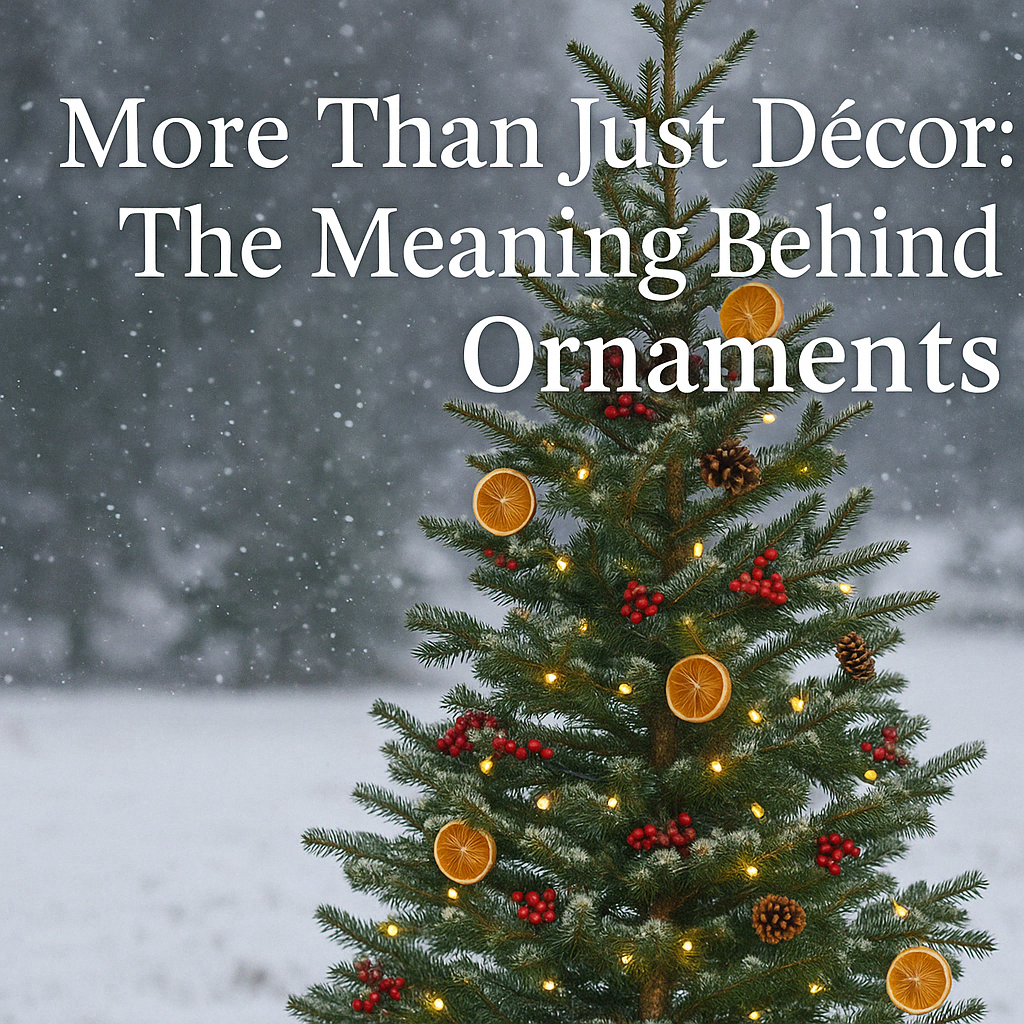When you hang ornaments on your Christmas tree each year, have you ever stopped to wonder what they mean? Many classic ornaments hold deeper symbolism, folklore, or traditions passed down through generations.
At The Little Ornament Shop, we love the stories behind these festive treasures—so let’s unwrap the hidden meanings behind some of the most beloved traditional ornaments.
The Christmas Pickle
Origin: German-American tradition (kind of!)
The legend says that on Christmas Eve, a pickle ornament is hidden deep in the tree. On Christmas morning, the first person to find it gets an extra gift or good luck for the coming year. While the "German" roots of this tradition are debated (most Germans have never heard of it!), it's become a quirky and beloved custom in many American households.
Meaning: Good luck, sharp eyes, and a fun family game.
Birds
Birds are a common ornament, especially cardinals, doves, and robins.
- Doves represent peace and love.
- Cardinals are often seen as messengers from loved ones who have passed.
- Robins symbolize new beginnings and renewal, especially in European folklore.
Meaning: Hope, peace, remembrance, and joy.
The Star
The star ornament represents the Star of Bethlehem, which led the wise men to the birthplace of Jesus. It’s often placed at the top of the tree as a beacon of guidance and faith.
Meaning: Spiritual light, hope, and direction.
Apples and Red Balls
Before glass ornaments existed, people used real apples to decorate trees. The red apple symbolized the forbidden fruit in the Garden of Eden—representing knowledge, temptation, and redemption.
Meaning: The promise of renewal and the story of humanity.
Stockings
While not hung on the tree itself, stocking-shaped ornaments are a nod to the tradition of St. Nicholas, who left gold in the stockings of children. Mini stocking ornaments carry the same festive spirit.
Meaning: Generosity, surprises, and the joy of giving.
Fish
In some cultures, especially in Eastern Europe, fish ornaments (often carp) symbolize Christ, abundance, and good fortune in the coming year. They’re also part of Christmas Eve meals in many countries.
Meaning: Faith, abundance, and fertility.
Candy Canes
These sweet treats have symbolic meaning, too! The "J" shape stands for Jesus, and the red and white stripes represent his purity and sacrifice. They were also originally given to children during church services to keep them quiet!
Meaning: Faith, kindness, and tradition.
Toy Ornaments
Miniature rocking horses, dolls, and toy drums are popular traditional designs, especially in Victorian Christmas décor. They symbolize childhood joy and the magic of gift-giving.
Meaning: Innocence, playfulness, and nostalgia.
Candle Ornaments or Lights
Before electric lights, people used real candles on their trees (yikes!). These symbolized the light of Christ and the warmth of family gatherings. Today, light-themed ornaments continue this tradition safely.
Meaning: Light, warmth, and spiritual guidance.
More Than Just Decorations
These traditional ornaments aren’t just beautiful—they’re meaningful, rich in history, and full of symbolism. Whether you’re carrying on old family customs or starting your own, knowing the stories behind your ornaments adds depth to your holiday traditions.
At The Little Ornament Shop, we create handmade ornaments that tell your story—whatever traditions you follow. Want to add a personal touch to a classic symbol? We’d love to make it for you.
P.S. Do you have a unique family ornament tradition? Share it with us on Instagram and tag [@thelittleornamentshop]! We’d love to feature your story.
